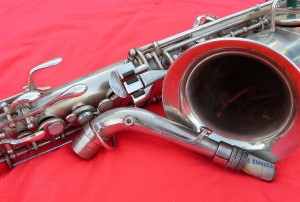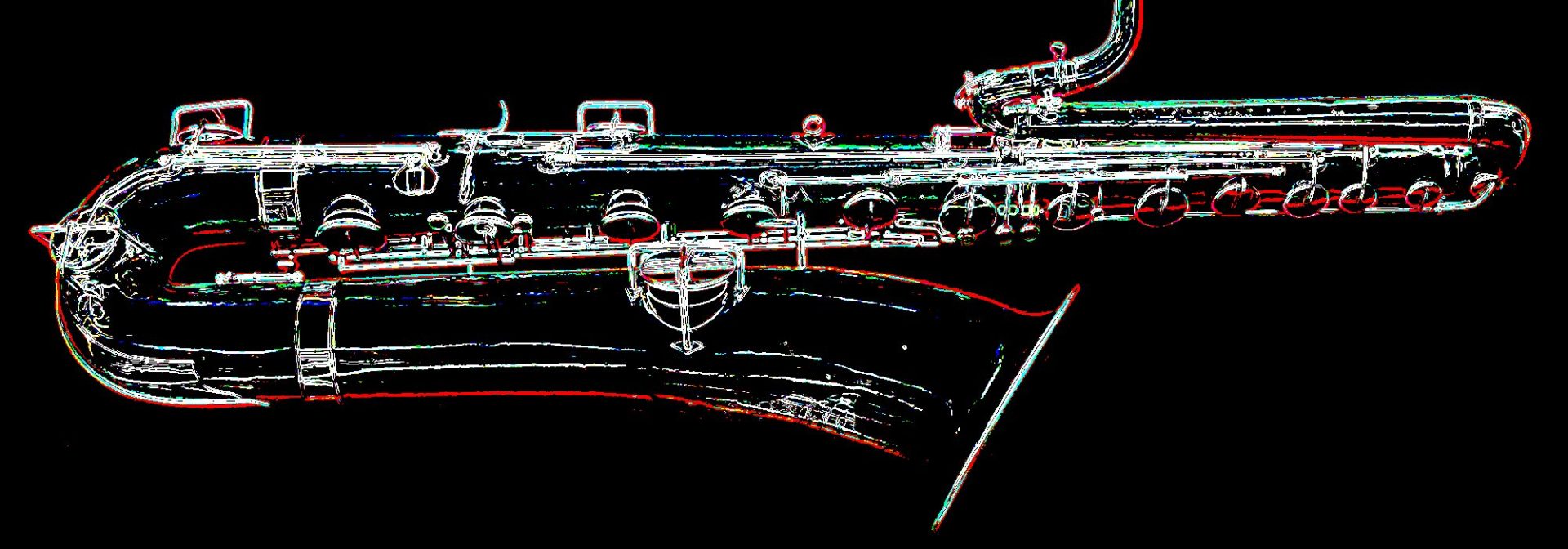
Recently saxophone historian and Woodwind Forum Administrator Pete Hales, happened across this interesting post on a French blog about vintage musical instruments. The blog’s owner, René Pierre, wrote an article about the French saxophone manufacturer Pierret.
What is very interesting in his post, is that Pierre has included a couple of catalogue pages from the 1960s that feature the Super Artiste and the Competition.
Furthermore, René Pierre has posted copies of letters—in French of course—that were written in 1920 on the Pierret company letterhead. The letters are part of an exchange between the L. Pierret and Gaudet Deslauriers companies. Unfortunately since my French is sadly lacking, I don’t have any idea what they’re talking about. Anyone here want to translate?
Just as interesting as this new print material, is the most extensive Pierret recording that I have heard to date. Pierre has embedded a solo recorded on a Pierret Super Artiste alto. No word on who the player is, but it gives us an idea of what kind of core sound these Super Artistes have.
The Super Artiste was one of the last model of horns Pierret produced before it ceased operations in approximately 1972. My much older Concerto with Virtuor model has a much older style sound. It is a throwback to the 1920s and 30s sound you hear on the recordings of the day.
So if you’re looking for some information on Pierret saxophones, do check out René Pierre’s Pierret page on his blog. If you poke around in his site some more, you’ll find all kinds of other interesting articles about companies such as Dolnet, Buffet, and Noblet.




Hi Helen,
I think I have spotted a Lafleur Pierret.
http://www.ebay.co.uk/itm/Vintage-silver-plated-french-Alto-Saxophone-/192015181616?hash=item2cb4ff2730:g:XHwAAOSwmfhX5myK
Interesting. If this is a Pierret—and all signs point to that it is—then it will be the first true Pierret stencil of this era that I have seen.
I write “true”, because stencils don’t normally carry the manufacturing company’s name on it. Pierret generally engraved their horns of this time with their name (like the C. Jeuffroy still had Pierret prominently engraved on the bell). Later stencils of course were not necessarily so stamped, but early horns certainly were.
Nice work, Paul. Pretty darn funny…it appears Mnsr. Pierret was about as on top of things as all of us are today ! 🙂 (I wonder what would happen if I told a client “sorry, the horn won’t be ready when you want it….. and I have to charge you 10% more !!!”) 😕
Hi there George. Thanks for stopping by.
I love some of the vintage horns that you have on your site. I’ve drooled over more than a few in the last couple of years. (Before we exchanged emails.)
I can think of a tech or 2 that I know (and no, I won’t name names 😉 ) who seem to have exactly that kind of shop policy you suggest. :devil2:
Hi there Paul.
Thank you for taking the time to translate those letters for us. They are an interesting snapshot into Pierret’s history.
Sorry for taking so long in getting back to you, I’ve been really behind all week, and trying hopelessly to catch-up…with no success…helen
You are quite welcome.
Thank you for the opportunity to exercise and improve my language skills, while paying a little back to this excellent resource that is emerging from your passion for the “other” saxophones out there.
Anyhoo, I found it insightful, and rather amusing.
The first letter opens with a “complaint” about how much in demand his services are; Mr P. then adds an artful dodge — a classic example of «couvrir l/arrière» or CYA — in the ambiguous delegation of responsibility for the C-tenor and baritone on to Mr M. He then finishes up with a generous bait-and-switch offer to expedite delivery at a lower cost by not including those very services for which his shop is in such demand.
In the second letter he not only misses the deadline, but also effectively rescinds the discount without offering to furnish an assembled instrument. This is business negotiation at its very finest. 😀
paul
Another cup of coffee and I see what those two little words are that I initially missed in the first letter.
The revised phrase looks like:
“; I couldn’t give you a date for the tenor in C and the baritone being held by Mr Martinot”
M****! There’s a typo that should read “before another fifteen days”.
That’ll teach me to publicly criticize another person’s handwriting, eh?
Hi Helen,
I can give you a rough account of the exchange, keeping in mind that the manuscript is a bit squirrelly and it is quite possible I have misread some of it. Corrections are most welcome 😉
”
11 March 1920
Mssrs. Gaudet & Deslauriers
I am overburdened with work at the moment and could deliver the alto and tenor saxophones at the end of next month; I could give you a date estimated by Mr Martinot for the tenor in C and the baritone [2 illegible words]
Alto Sax [with] alternate C key, alternate Bb key, low Bb with rollers, articulated G# 320 Francs
less 47 Francs for setup and pads
Tenor Sax, same model 390 Francs
less 60 Francs for setup and pads
[I assume the deductions are to expedite an earlier delivery than the full service which would include assembly, padding, setup etc.]
Please agree according to your requirements.
Sincerely,
Pierret
”
”
20 May 1920
Mssrs. Gaudet & Deslauriers
In response to your letter of the 18th, I can not deliver an Eb Alto Sax with low Bb berfore another fifteen days, despite my best intentions.
Please take note that I am obliged to raise the last price by 10%, in view of successive increases in cost of materials.
Sincerely
Pierret
”
Please note that several words have been cut off on the right hand margin of the second letter, so I’ve made some reasonable guesses. Also, Monsieur Pierret has an annoying habit of neglecting to properly dot the “Is” and “Js” and appears to sign his name “Pièrrez” :scratch:
Regards,
paul